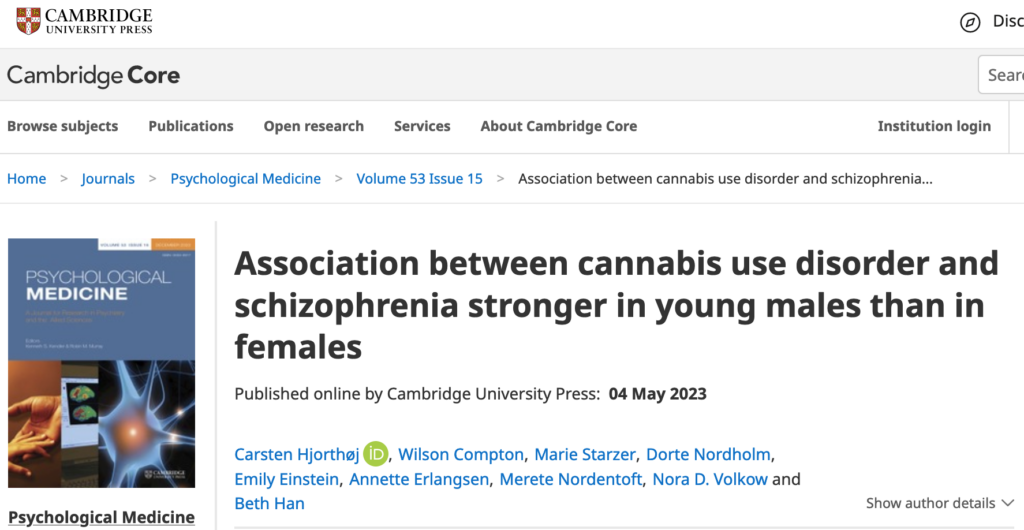
Clinicians and researchers across the world rely on the Diagnostic and Statistical Manual of Mental Disorders (DSM) for criteria to diagnose mental disorders. And despite increased public acceptance of cannabis over the years, in 2013, authors of the DSM recognized the drug’s dangers by adding to the manual cannabis use disorder (CUD), a dangerous addiction to cannabis.
In May 2023, researchers published a study on CUD in Psychological Medicine, a peer-reviewed international journal published by Cambridge University Press. Carsten Hjorthøj, research leader at the Copenhagen Research Center for Mental Health, among eight other researchers, set out to examine whether CUD may be linked to schizophrenia, and if it was, whether that link varied by sex and age. They studied databases on the Danish population, looking at the health records of 7 million people aged between 16-49 from 1972–2021.
And the researchers did find a link between CUD and schizophrenia. They discovered that young males in particular were more susceptible to the effects of cannabis on schizophrenia. In 2021, among males, 15% of schizophrenia cases were attributable to CUD, compared to 4% among females. Up to 30% of schizophrenia cases in males aged 21–30 could’ve been prevented had they just not developed a cannabis addiction. The researchers claimed their results might even be “conservative” conclusions, considering they studied only cases of CUD and schizophrenia that had been diagnosed.
So many records were used in this study, which means the results are highly generalizable to any populations exposed to the same kinds of cannabis available on the Danish market. This isn’t the first study to suggest a link between these two mental disorders, either. That’s why it’s so important for doctors to proactively screen for and detect CUD, especially in young males. It could save their lives from disaster.
To read the full study, visit this page.

